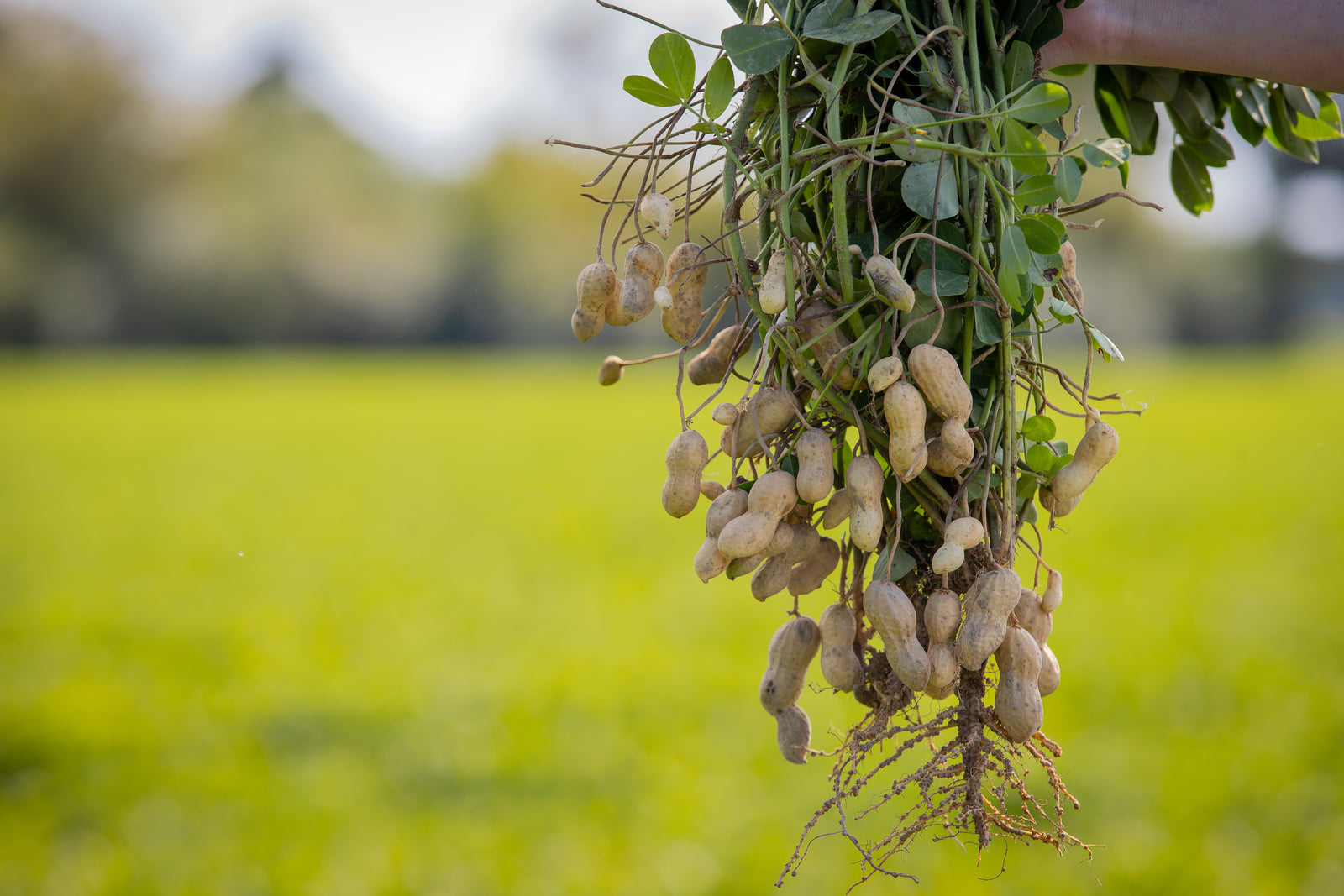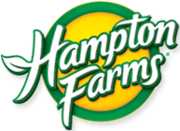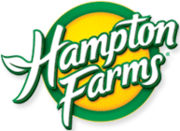How Are Peanuts Grown?

Since the peanut is technically a legume, it’s grown and harvested differently than other nuts. Read on to learn more about where in-shell peanuts come from and how they’re grown and harvested, and discover how this snack-time favorite goes from ground to table.
Where Do Peanuts Come From?
Peanuts come from the little kernels growers save from the previous season’s crops. Each kernel is buried two inches deep into the ground after the last April frost. It takes only about 10 days for peanut seedlings to pop up out of the soil and start growing into green plants that will reach about 18 inches high. After 40 days, small yellow flowers bloom around the bottom of the peanut plant, where they self-pollinate and drop off as peanut ovaries begin to grow. Over time, the ovary forms a small stem containing the peanut embryo; this stem grows down into the soil, where the embryo begins to develop. Each peanut continues to grow under the soil while the plant above keeps producing flowers, ovaries, embryos, and nuts until it matures.
How Are Peanuts Harvested?
At harvest time, a digging machine comes along and pulls up each peanut plant, shakes off the soil, and sets the plant back down with the peanuts facing up to dry and cure in the sun. A few days later, a combine harvests the peanuts, and leaves the vines to enrich the soil or become food for livestock. The harvested peanuts go into a wagon where they will dry and cure some more before they’re sorted and sent for processing. After that, peanuts can be left raw in the shell, roasted and salted, shelled and honey roasted, or made into peanut butter; the options are many and delicious.
Peanuts Are Grown Sustainably
How peanuts are grown makes them more environmentally friendly than other nut types. It takes just over three gallons of water to grow one ounce of peanuts; that’s a dramatic difference compared to the 28 gallons it takes to grow the same amount of almonds. Most of the water comes from rain, but peanut growers will irrigate the field in dry conditions.
Peanuts are nitrogen-fixing plants; they bond with a good bacteria found naturally in soil and convert nitrogen into fertilizer that helps them grow. This natural nitrogen conversion eliminates the need for fertilizer, making peanuts a self-contained plant that takes pressure off both the growers and the planet.
Peanut shells have their own sustainable uses, too. Read more about why in-shell peanuts are better and discover how to use the shells after the nut is long gone.
Hampton Farms has been the leading supplier of the freshest, best quality roast and raw peanuts from seed to shelf since 1917 so you can enjoy them in-shell, out of shell, salted, unsalted, or any way you like them.


Leave a comment